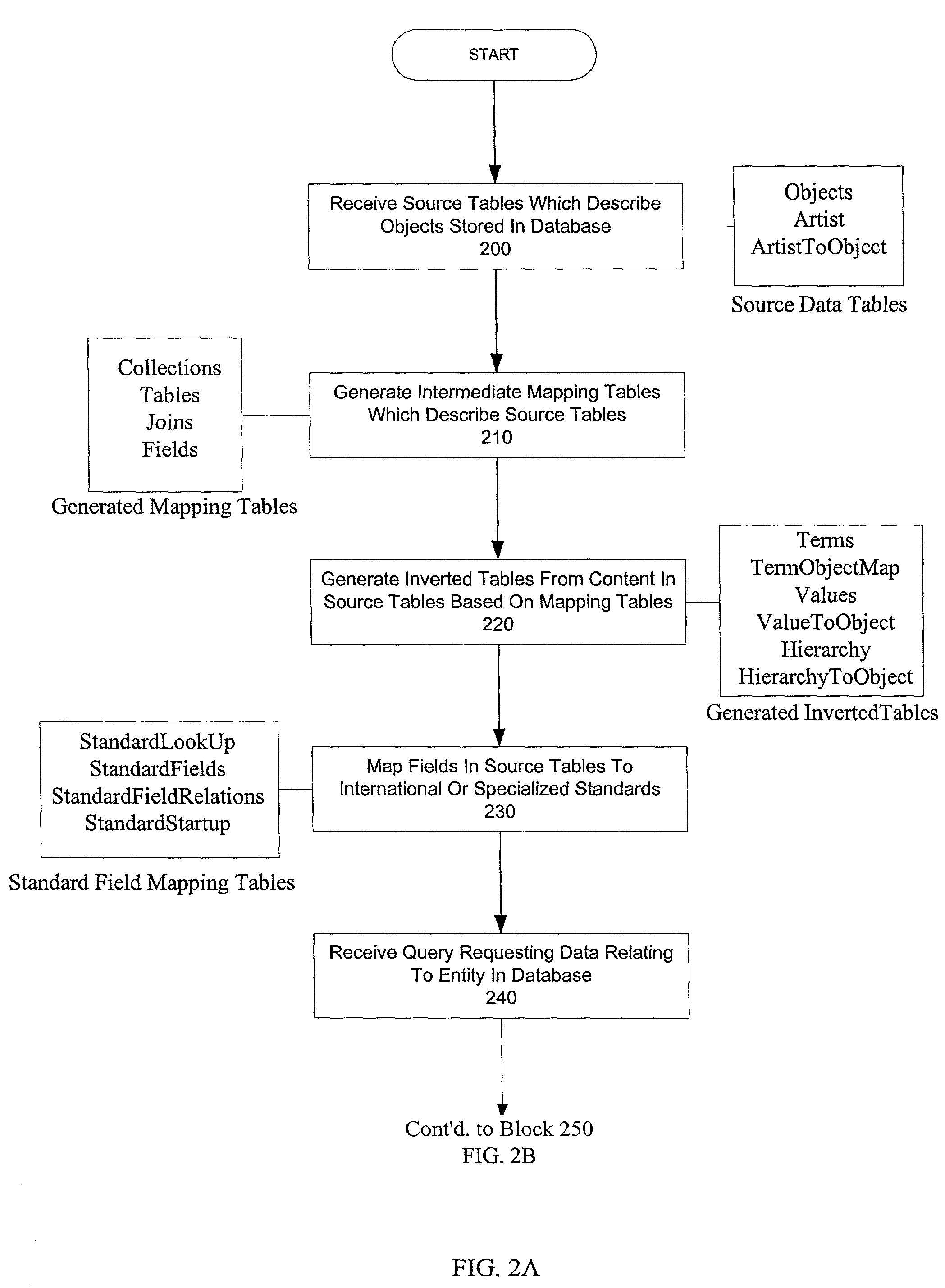Simultaneous searching across multiple data sets
a database and data set technology, applied in computing, instruments, electric digital data processing, etc., can solve problems such as affecting the ability complex functions, and inability to search databases simultaneously, and achieve the effect of improving search flexibility
- Summary
- Abstract
- Description
- Claims
- Application Information
AI Technical Summary
Benefits of technology
Problems solved by technology
Method used
Image
Examples
Embodiment Construction
table 1630. Example1 table 1630 includes columns: FieldID 1632, Grouping 1634, DisplayName 1636, Value 1638, and ObjectID 1639. Each value 1638 retrieved from the object identified by ObjectID=1. In this example, since only one object was used, referring back to the Objects table 300, this object is the Kleine Welten VII object. Each value 1638 relates to this object. For example, this work of art was created in 1922, has a restricted use status, was created by both Vasilly Kandinsky and Eugene Delacroix who were born in 1866 and 1798 respectively. Thus, depending on the values requested in the query, many different types of information can be retrieved.
[0167] Formatting Retrieved Values
[0168] Referring back to FIG. 2, block 280, having retrieved the values from the objects, whether stored on a single database, multiple databases, distributed databases, or in different classification schemas, the values may be formatted for display. To format the display, the data processing system ...
PUM
 Login to View More
Login to View More Abstract
Description
Claims
Application Information
 Login to View More
Login to View More - R&D
- Intellectual Property
- Life Sciences
- Materials
- Tech Scout
- Unparalleled Data Quality
- Higher Quality Content
- 60% Fewer Hallucinations
Browse by: Latest US Patents, China's latest patents, Technical Efficacy Thesaurus, Application Domain, Technology Topic, Popular Technical Reports.
© 2025 PatSnap. All rights reserved.Legal|Privacy policy|Modern Slavery Act Transparency Statement|Sitemap|About US| Contact US: help@patsnap.com



